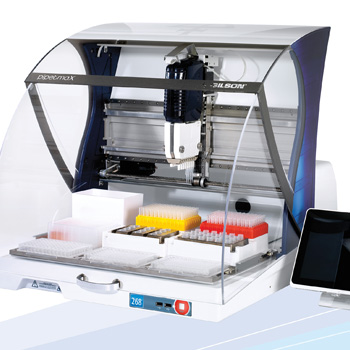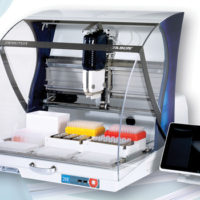For better or worse, increased scrutiny and focus on the safety of our food supply, typically results in an increase in testing volumes. The number of food microbiology tests has reportedly risen 128 percent over the past 15 years with pathogen-specific tests representing nearly a quarter of the total.[1] Testing labs are challenged to find innovative, cost-effective ways to improve testing efficiency, eliminate errors, conserve labor and reduce workload pressure. Much of this can be achieved with automation. The right automation streamlines lab workflow and results in a more reproducible process with less hands-on interaction. However, identifying the “right” automation is not necessarily a simple process.
Understanding a Lab’s Workflow Is Key to Automation
Analyzing laboratory workflow is a key part of automation planning, since the effective use of automation may require a laboratory to redefine its work process. Labs may operate in a batching mode whereby samples are collected and processed simultaneously as a large group or in a continuous workflow, processing samples as they arrive in a first in/first out fashion. Automation systems are typically optimized for only one workflow model, so it is critical to understand which workflow is best for your lab.
It is also important for lab managers to fully understand the turnaround time expectations for test results and the capacity of the equipment, as this may impact the number of automated instruments necessary to meet these time objectives. They should also be aware that the floor or bench space necessary to accommodate the instrumentation may necessitate renovation of the laboratory space. The associated costs should be factored into the capital budget. The ability to divert the tests to a backup instrument or manual process in the event of unforeseen equipment failures should also be considered.
Beware of Hidden Costs
The move to automation can often carry significant hidden costs that are not readily apparent to the user. For instance, automated equipment often requires customized consumables such as sample tubes, pipette tips, reagent troughs, etc., which can quickly raise the cost per test. The maintenance, calibration and service of equipment should also be considered when trying to determine whether the equipment will really help reduce overall testing costs for the laboratory.
Through the planning process, laboratories may discover that some automated systems cannot meet their throughput needs and may actually increase their testing costs. Targeted or task-specific automation may be a better solution under some circumstances. For instance, adding automation to the most labor-intensive portions of a test method may, in fact, represent the greatest return on investment for the lab. The cost of the capital equipment is typically much less than for full automation. Because this type of automation focuses on doing one specific task rather than completing a series of more complex procedures, it is often more robust and easier to operate.
Innovative Automation from BioControl
To meet the challenge, BioControl Systems has recently introduced two new automation platforms for use with their pathogen detection methods. The new Thunderbolt automated enzyme-linked immunosorbent assay (ELISA) platform is a fully automated system that can process up to 372 samples in a single 8-hour shift. The workflow has been specifically designed to provide fast and efficient loading of samples in one easy step. The high sample capacity of the instrument allows for true walk-away convenience and has been shown to reduce hands-on labor by as much as 25 percent and decrease overall testing costs by 40 percent compared to other automated ELISA methods. With a small bench top footprint of just 2 ft2 and the ability to integrate lab information management systems, the Thunderbolt can be easily implemented into most laboratories.
BioControl has also introduced automation for use with Assurance GDS, its polymerase chain reaction (PCR)-based platform. The new Assurance GDS PIPETMAX is a targeted automation solution that provides labs with an affordable, flexible means of automation. Using this platform, all necessary reagents for Assurance GDS assays can be dispensed up to 1 day in advance, which streamlines the sample preparation process and can reduce hands-on labor by as much as 50 percent while helping to eliminate potential errors associated with repetitive pipetting tasks. Capable of processing over 400 samples in an 8-hour shift and providing results for all major foodborne pathogens in less than 24 hours, the addition of the PIPETMAX, makes Assurance GDS one of the fastest and most efficient PCR-based pathogen detection systems on the market today.
Choosing to invest in laboratory automation is a significant financial decision. The right system can improve quality and reduce labor costs, helping to improve the bottom line. However, the decision must be made carefully to ensure the system will meet the lab’s objectives. To learn more about the latest in pathogen automation, contact BioControl Systems at 800.245.0113, info@biocontrolsys.com or www.biocontrolsys.com.
Reference
1. Strategic Consulting. 2013. Food Micro, Eighth Edition: Microbiology Testing in the Global Food Industry.
The Time Is Right for Automation in Pathogen Testing Labs




